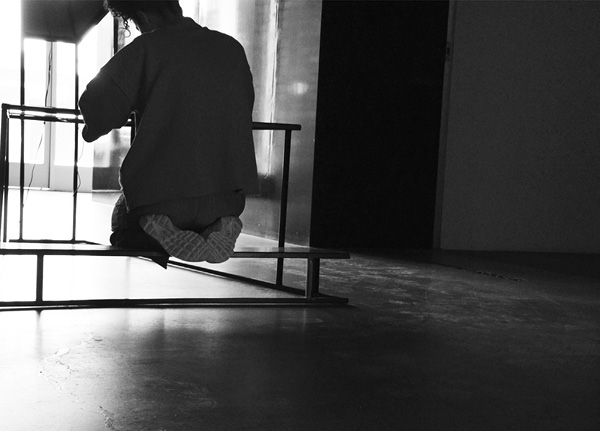
WE ARE INSEPARABLE THERE IS NO TIME
first performed on June 18, 2016
Honor Fraser Gallery, Los Angeles, CA
performed six times in 2016
REBECCA BRUNO
Mak Kern, Samantha Mohr, Odeya Nini, Yann Novak, Emily Batson, Drew Denny
Los Angeles, CA
rebeccabruno.net
homela.org
WE ARE INSEPARABLE THERE IS NO TIME
REBECCA BRUNO
Rebecca Bruno’s work investigated how objects, sound, bodies, and the space they inhabit coalesce to create experience and thereafter, how memories of the experience are physically stored and accessed. Bruno’s impetus for “We Are Inseparable There is No Time” was the memory of the separation, confinement, and collective otherness she experienced while attending a bris milah in Israel. For this specific work, through this lens, Bruno examined an act of political and spiritual protest that occurred at the Western Wall in Jerusalem in 2015. In defiance of rabbinic authority, a group of women danced with, and read from, a public Torah scroll during a prayer service in the women’s section of the pilgrimage site. “We Are Inseparable There is No Time” probed this event and raised questions about the embodiment of religion and worship, the social implications of gender division in prayer, and the unique reflection enabled by corporeal meditation on the balancing capacity for nourishment and destruction in the natural world.
In the main gallery of a multi-room installation at Honor Fraser Gallery in Los Angeles, one dancer explored directing her awareness in eight specific phases during each hour of the exhibition; 36 hours in total between dancers Samantha Mohr and Rebecca Bruno. This embodied practice stemmed from eight simple instructions that guide these intimate performances:
Position // eyes // attention
Down // closed // inward
Down // open // inward
Down // closed // outward
Down // open // outward
Up // open // outward
Up // closed // outward
Up // open // inward
Up // closed // inward
Additional rooms within the gallery housed a diverse range of multi-media works. Sculptures by artist Mak Kern included an oversized steel chime, as well as sculptures of broken glass and blocks of ice. A podium-prayer-desk served as a platform for layered tracings of media images and a recorded call to prayer by vocalist Odeya Nini. Another sound installation, created by Yann Novak, filled one small gallery alongside a projected video of hands holding ice. In one transitional space was a live-feed of Jerusalem’s Western Wall, a religious pilgrimage site and area of ideological and gender divisions. The performance and installation looked more broadly at how spaces are defined as secular or sacred and how this impacts the way objects and bodies are perceived and interact in those spaces.